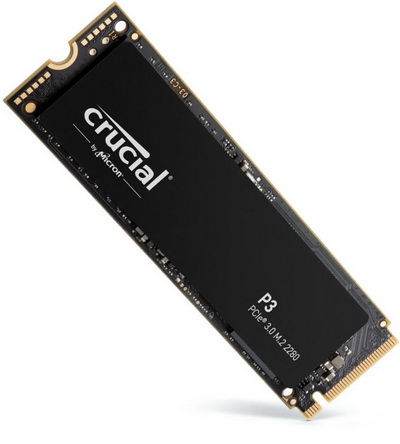INTRODUCTION

The appearance of PCIe 4.0 Gen4 SSDs roughly 4 years ago followed by the somewhat recent debut of PCIe 5.0 Gen5 models has made it easy for many to forget that the vast majority of consumers still use PCIe 3.0 Gen3 systems. Unfortunately, this also stands true for many storage media manufacturers and even though i do realize that some need to focus their resources to develop models based on newer standards support for older systems is always a must in my book. Luckily there are always some manufacturers which do their best to cover everyone in the market and since Crucial has made that clear over the years the release of their P3 line of PCIe 3.0 Gen3 M.2 NVMe SSDs last year was not unexpected.
We are an industry leader in innovative memory and storage solutions transforming how the world uses information to enrich life for all. With a relentless focus on our customers, technology leadership, and manufacturing and operational excellence, Micron delivers a rich portfolio of high-performance DRAM, NAND and NOR memory and storage products through our Micron® and Crucial® brands. Every day, the innovations that our people create fuel the data economy, enabling advances in artificial intelligence and 5G applications that unleash opportunities — from the data center to the intelligent edge and across the client and mobile user experience. To learn more about Micron Technology, Inc. (Nasdaq: MU), visit micron.com.
Just like the P3 Plus line the P3 is currently available in 500GB/1TB/2TB/4TB capacities and is also based on PHISON's 4-channel (ARM Cortex-R5 single processor) PS5021-E21 NVMe v1.4 DRAM-less NAND flash controller along with Micron's 176-layer 3D QLC NAND flash (N48R). Yes, the Crucial P3 PCIe 3.0 Gen3 line uses an PCIe 4.0 compatible NAND flash controller and what’s really important about that is not so much performance (since many Gen3 SSDs have long hit a ceiling on that) but the up-to-date set of features it packs (as opposed to older Gen3 oriented controllers). Once again the PS5021-E21 NAND flash controller by PHISON features their 4th Gen LDPC engine (low-density parity check) along with end-to-end data path protection, Host Memory Buffer (HMB) architecture support (a fraction of your PC's system memory is used to cache mapping tables - only supported on versions of Windows 10/11 launched from 2019 and beyond), wear levelling, low power mode, thermal monitoring (70 degrees Celsius limit), TRIM, bad block management, static/dynamic range SLC cache and SmartECC 2.0 (RAID ECC) and fully supports AES-256bit hardware encryption (with SHA512 and RSA4096) along with TCG Opal 2.0 and Pyrite. In terms of endurance Crucial reports an TBW of 110/220/440/800 for the 500GB/1TB/2TB/4TB models and as expected covers the entire line with a 5-year limited warranty.

 O-Sense
O-Sense







.png)

